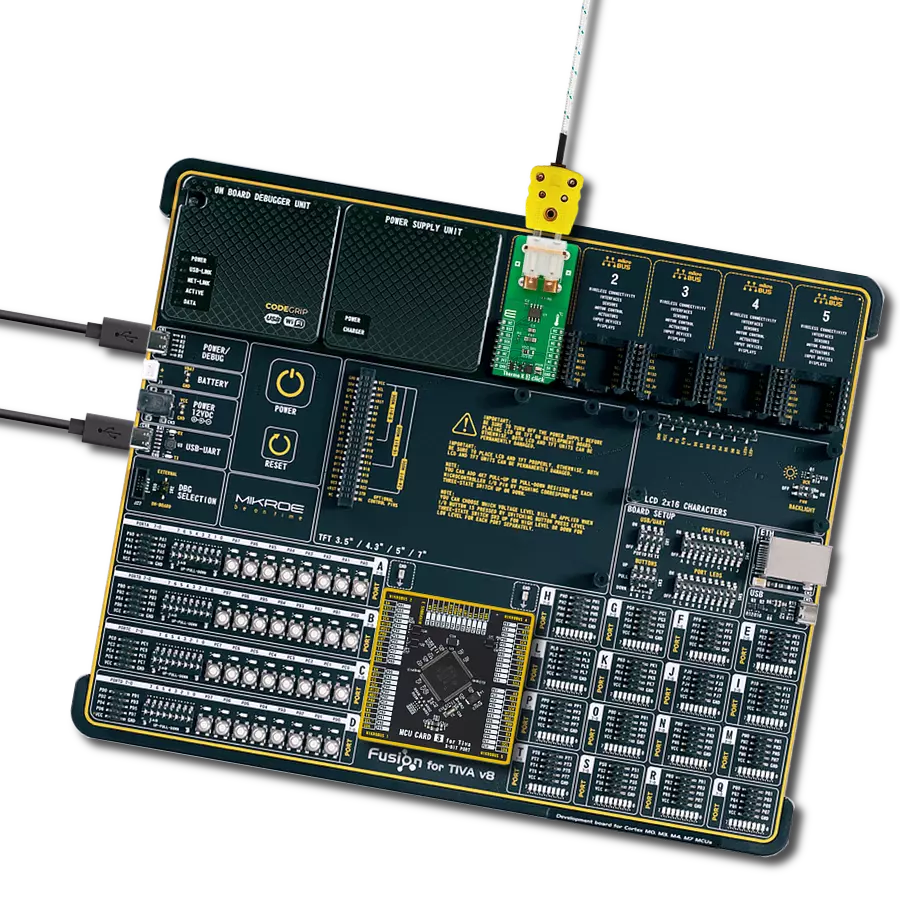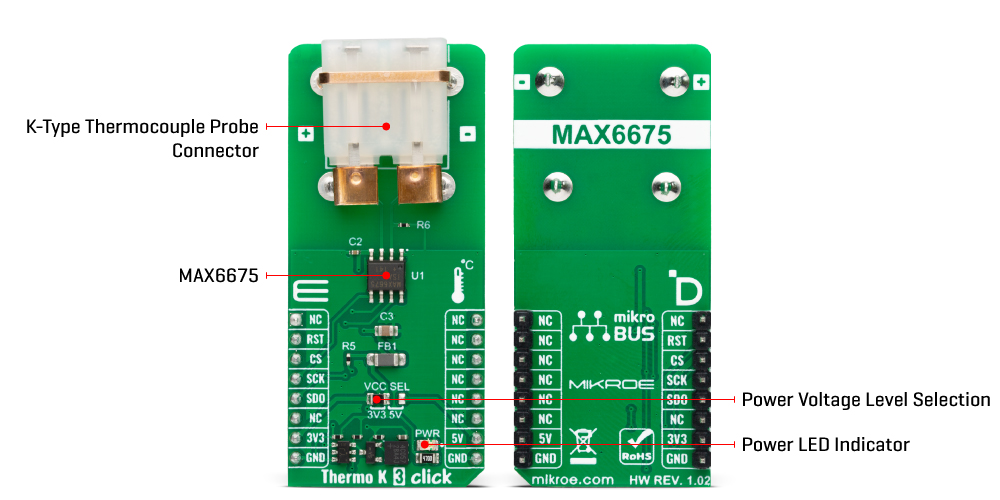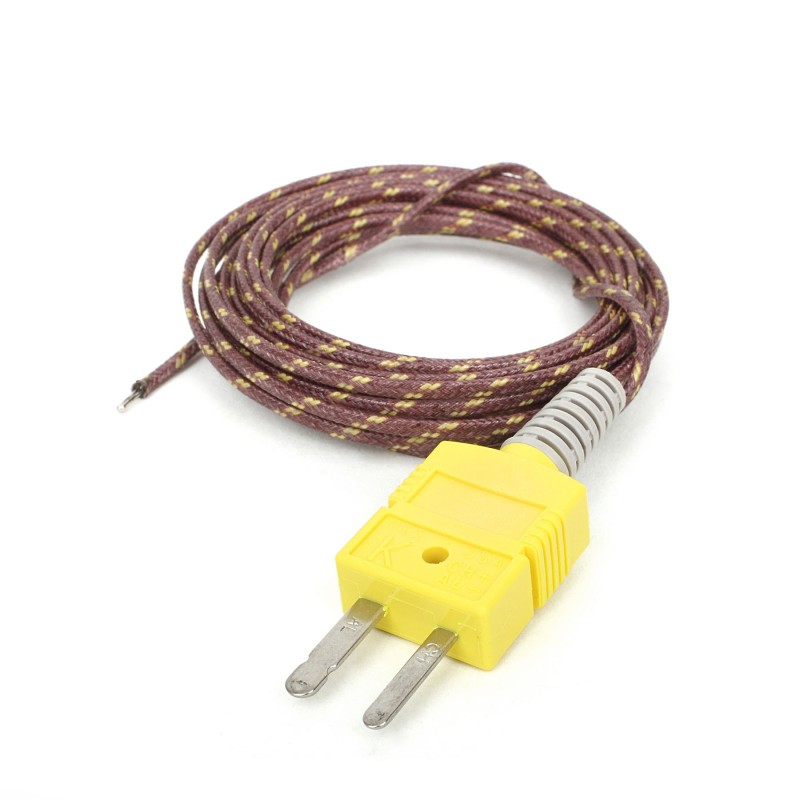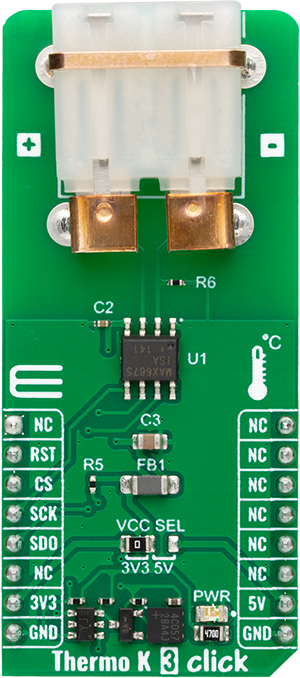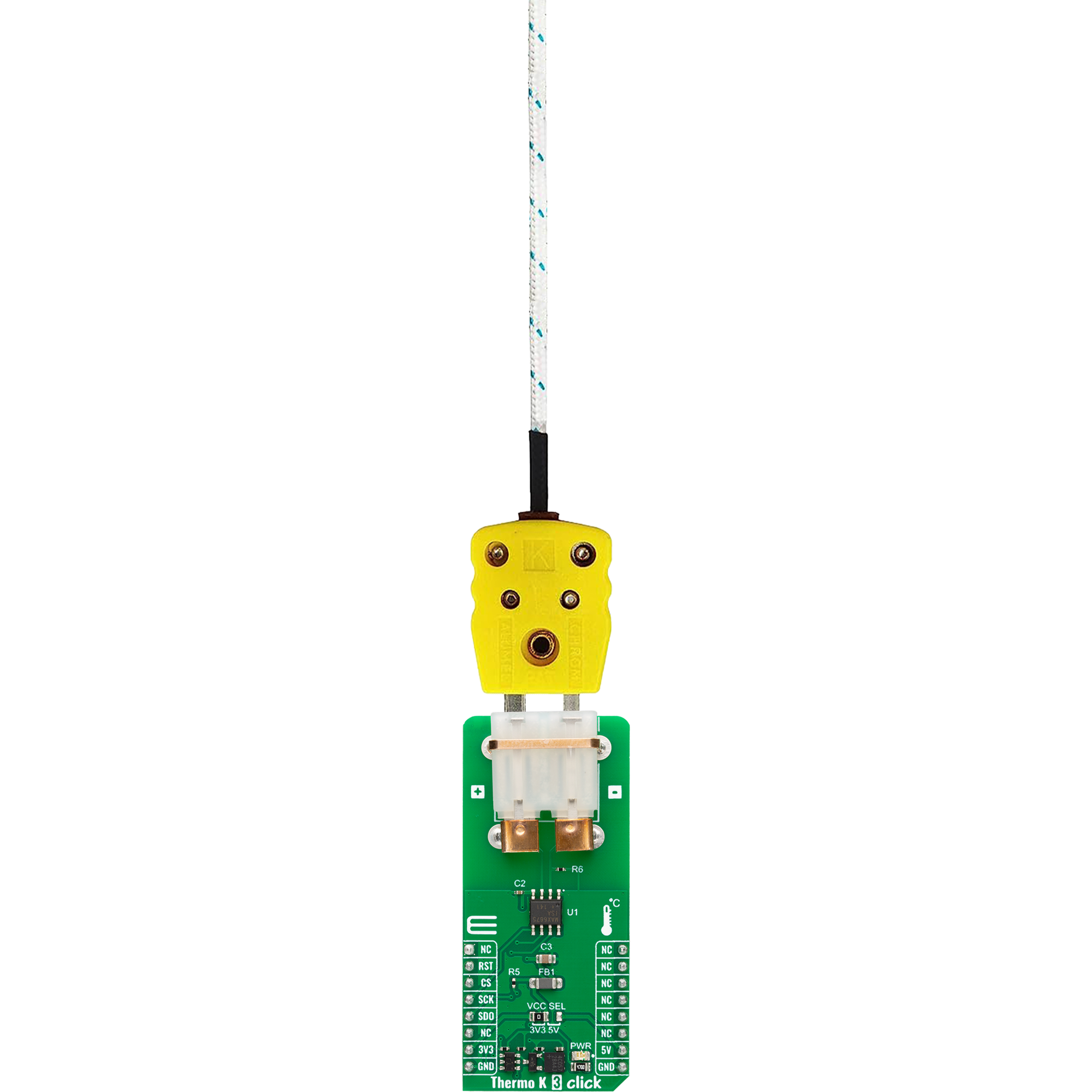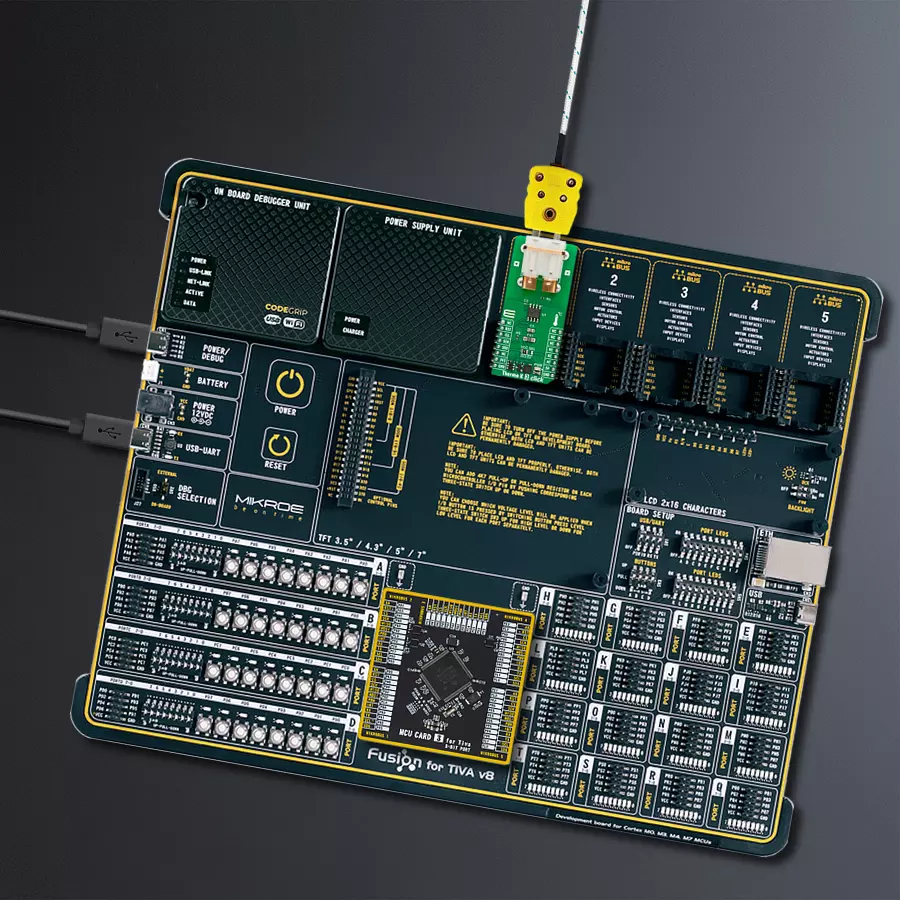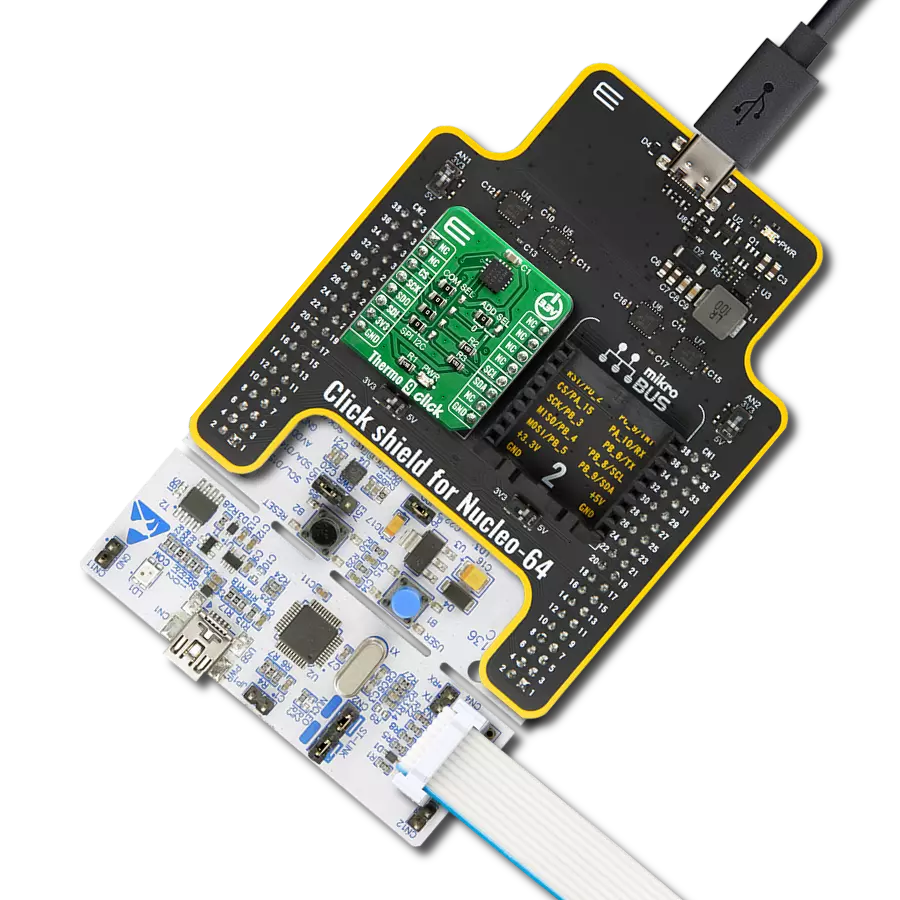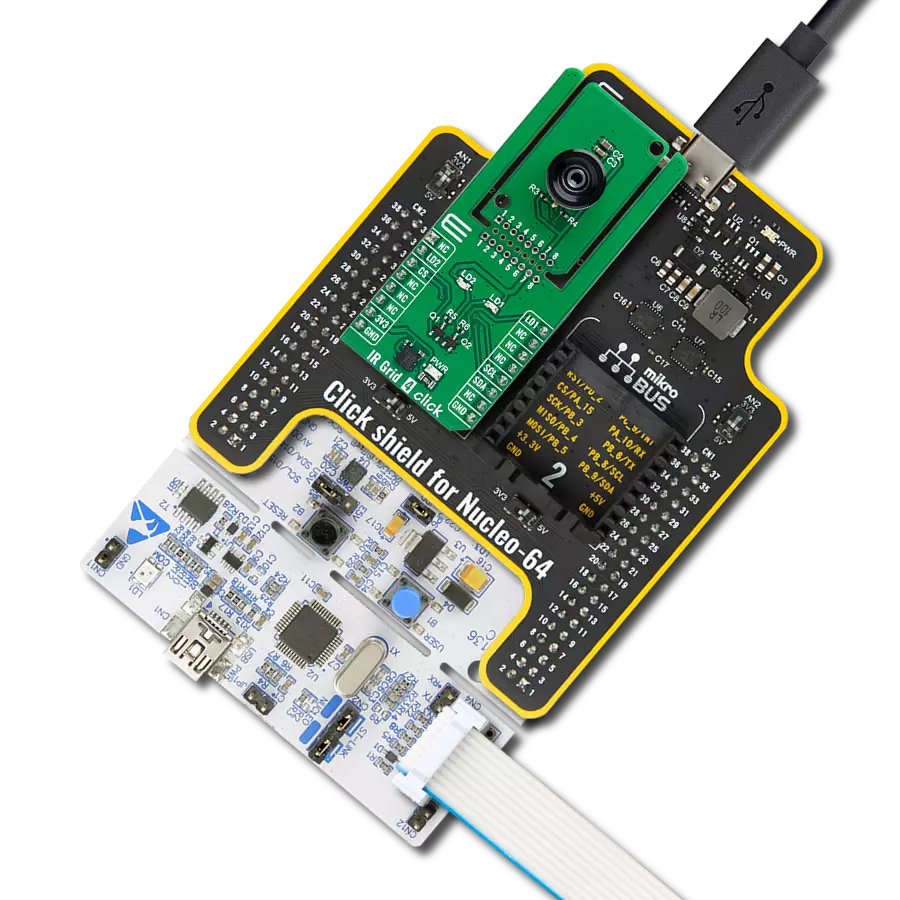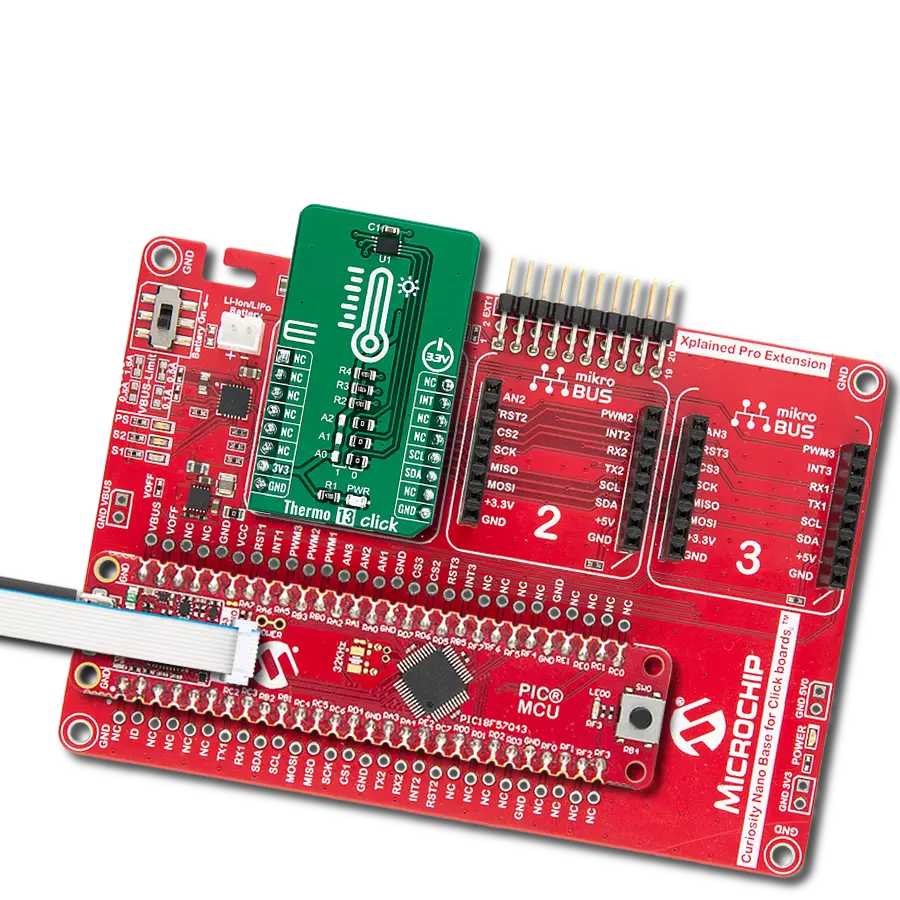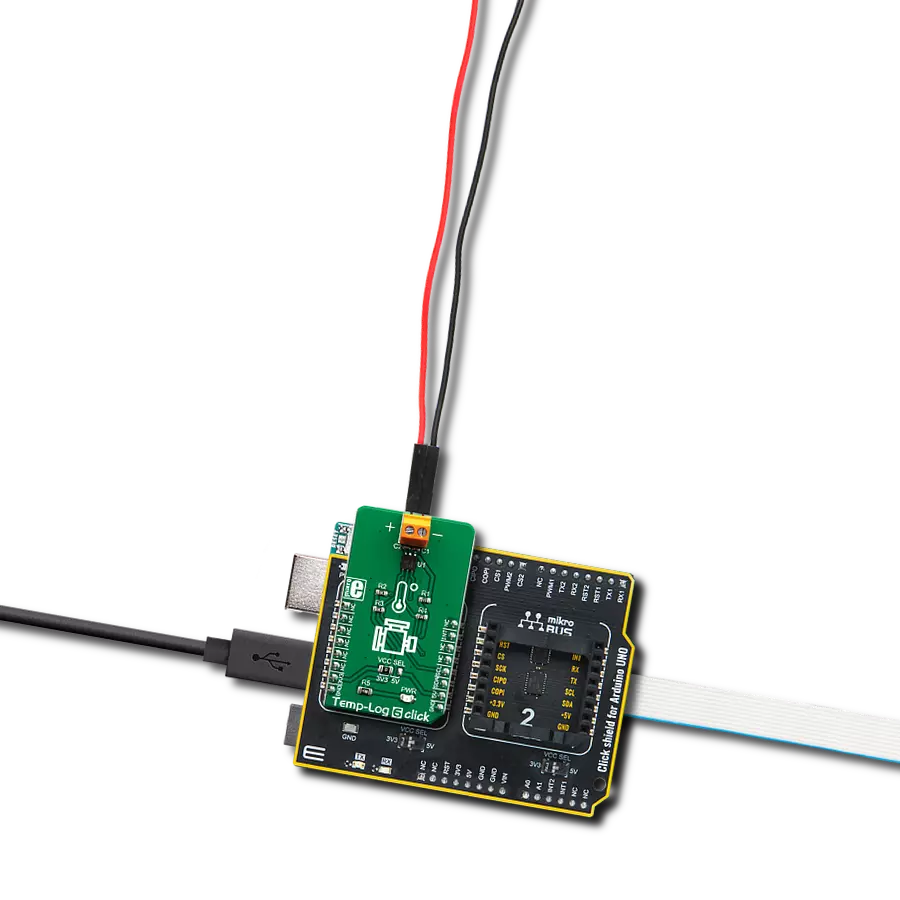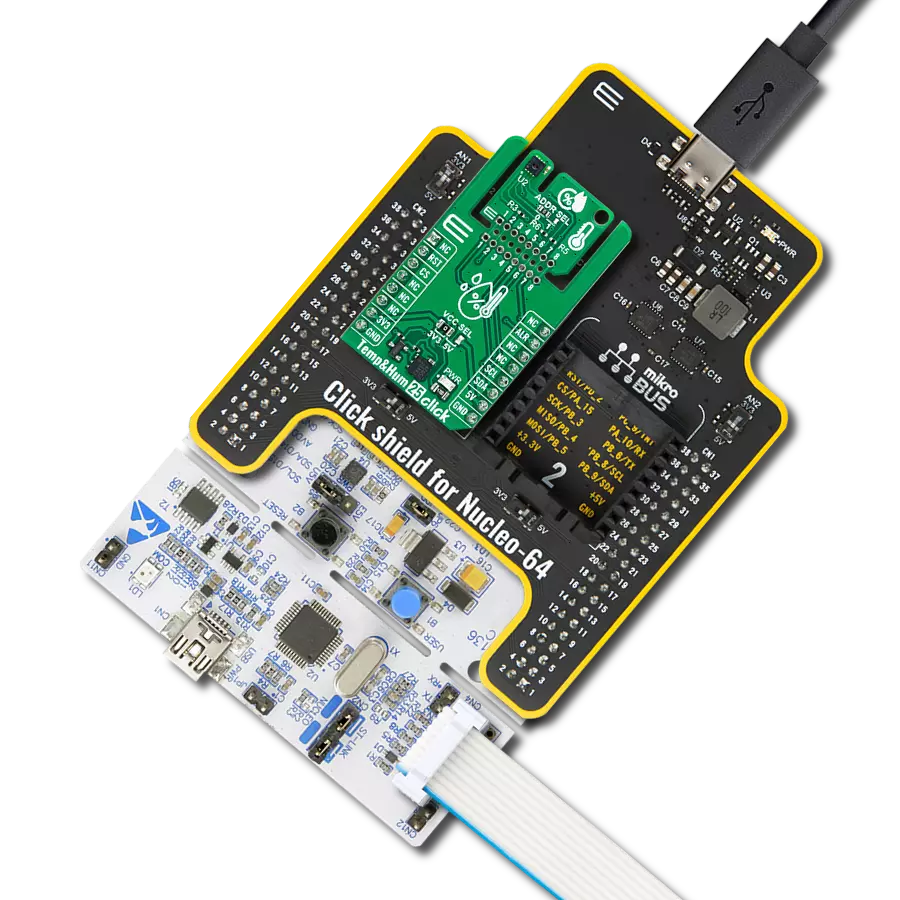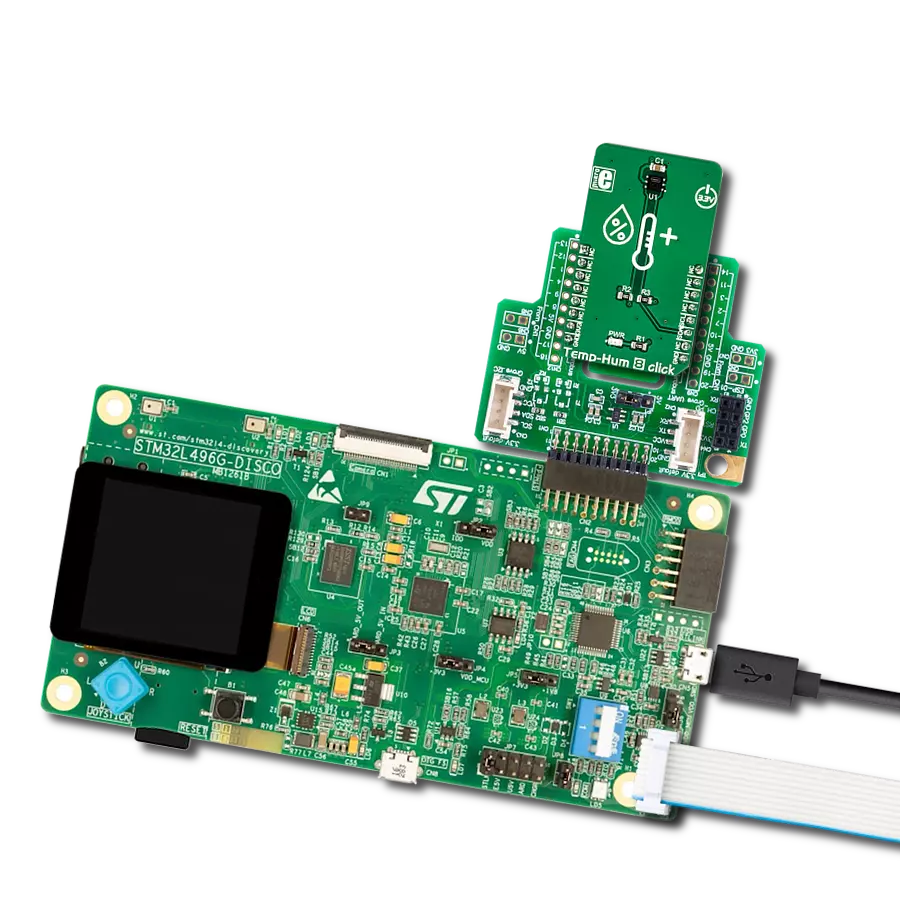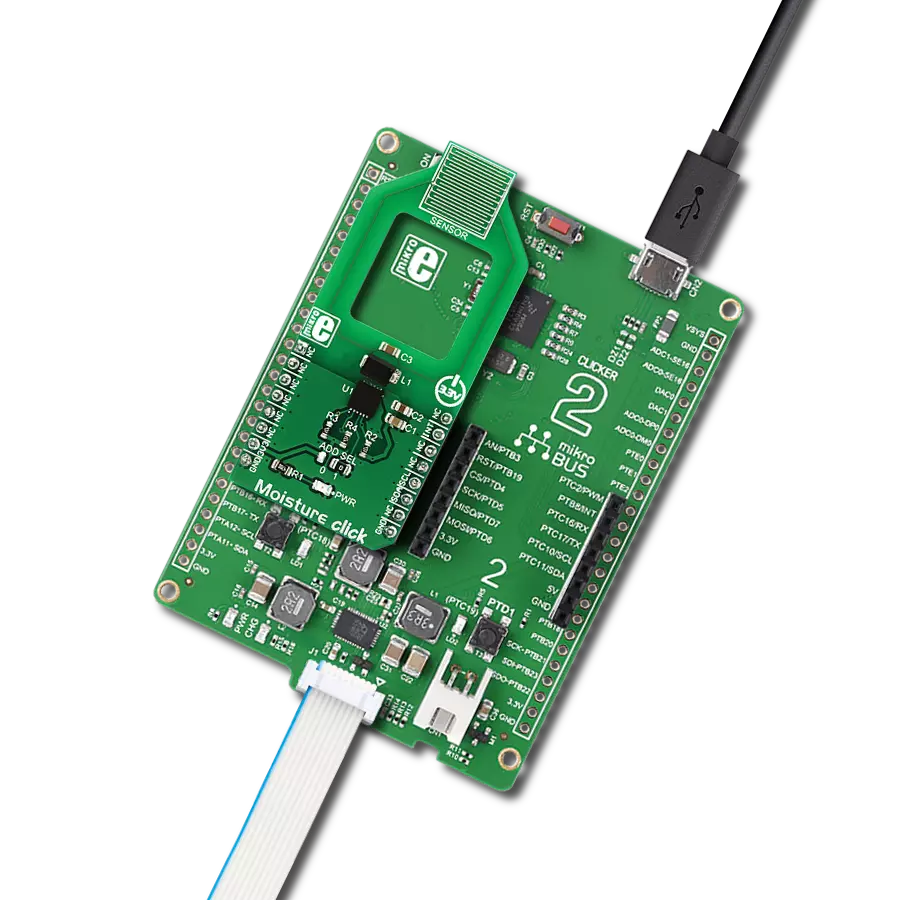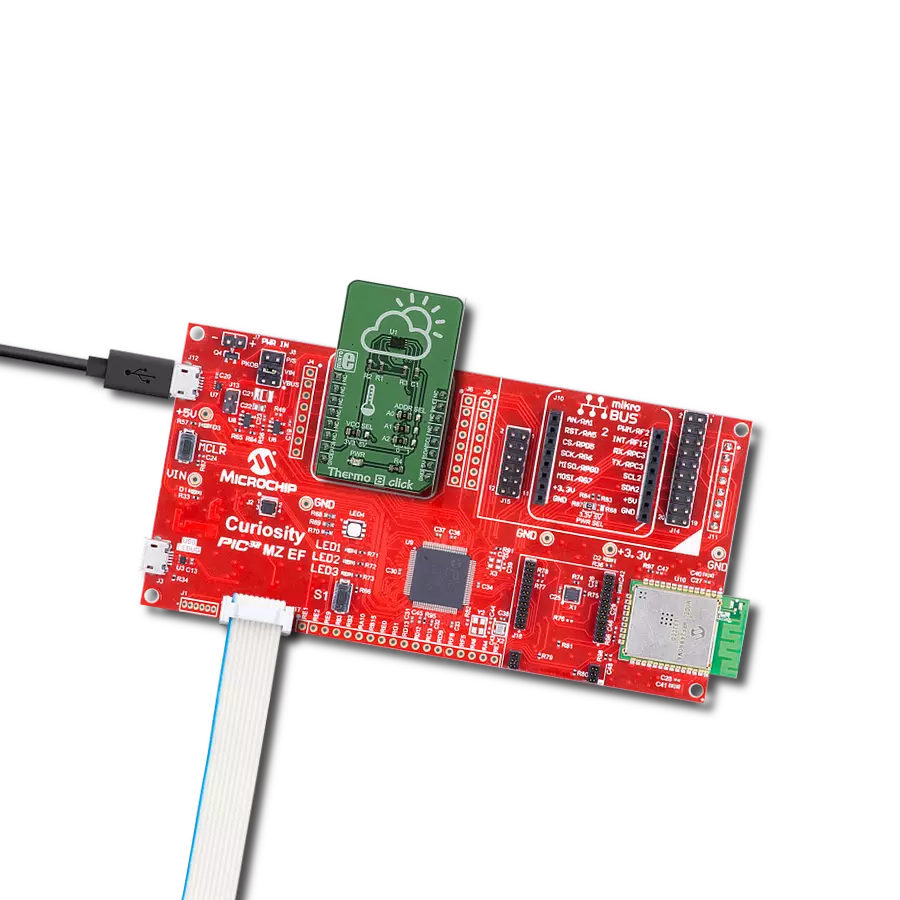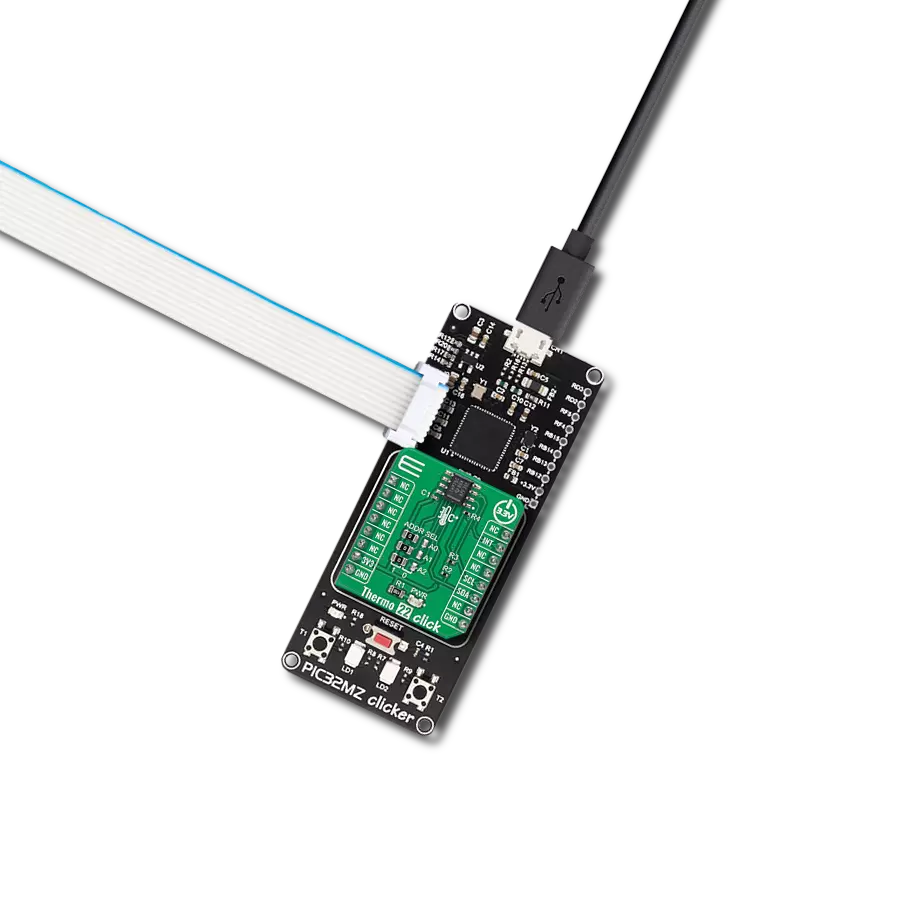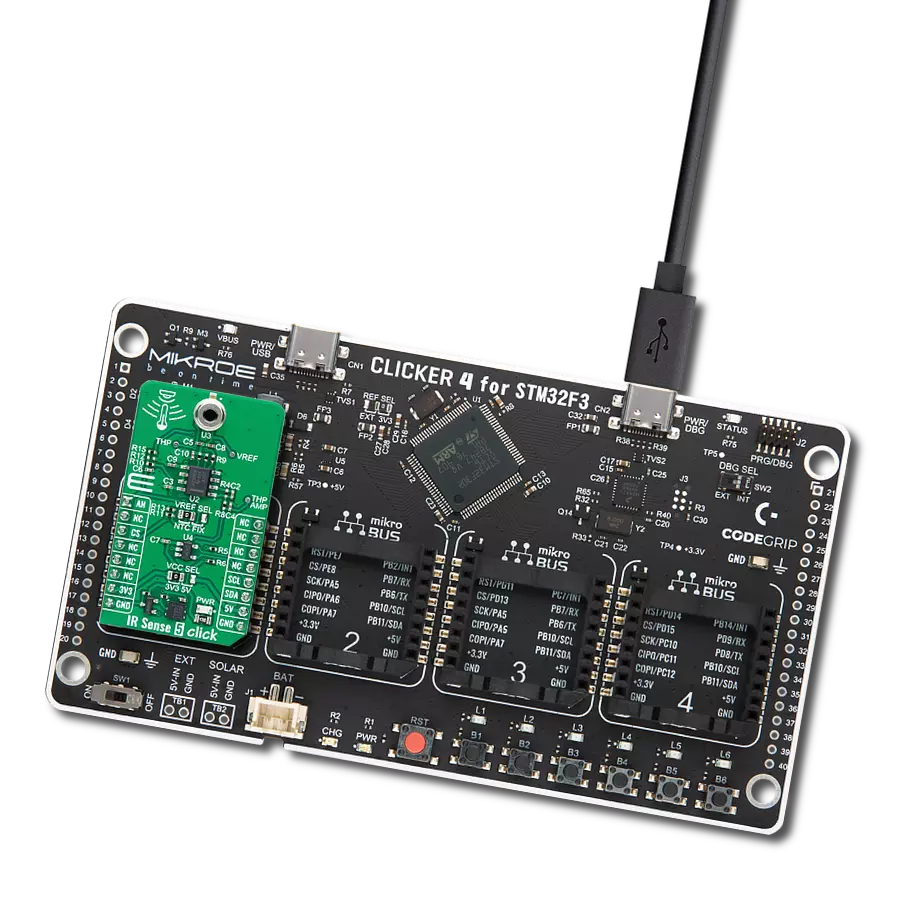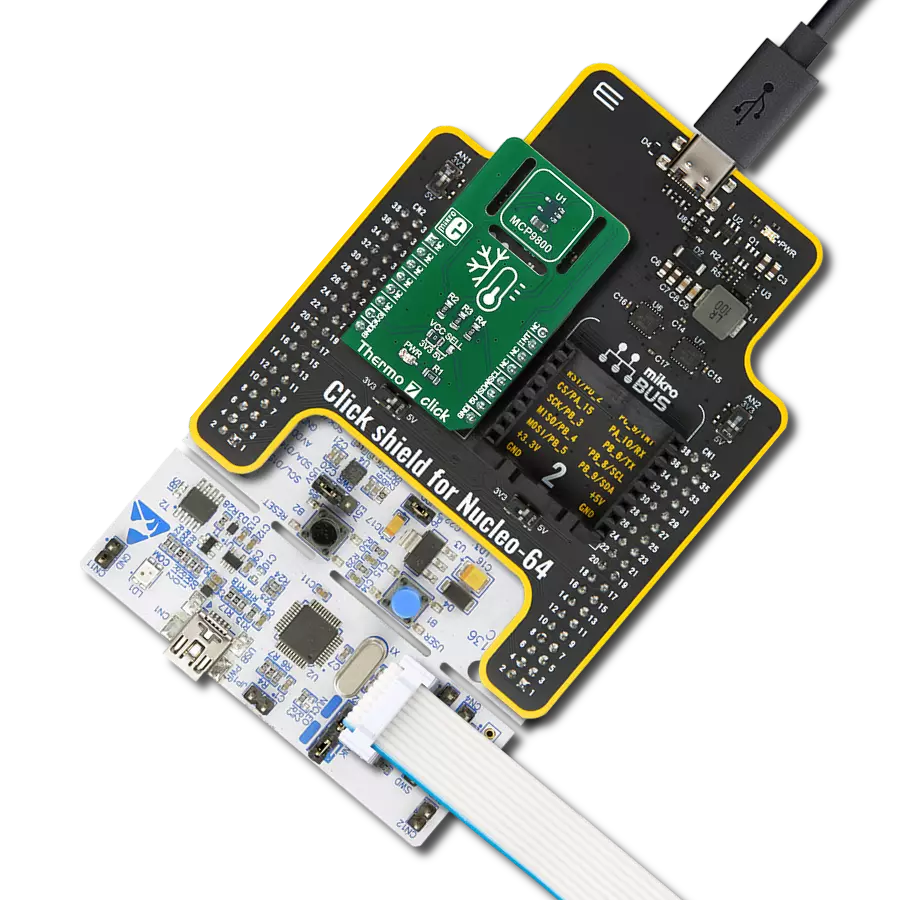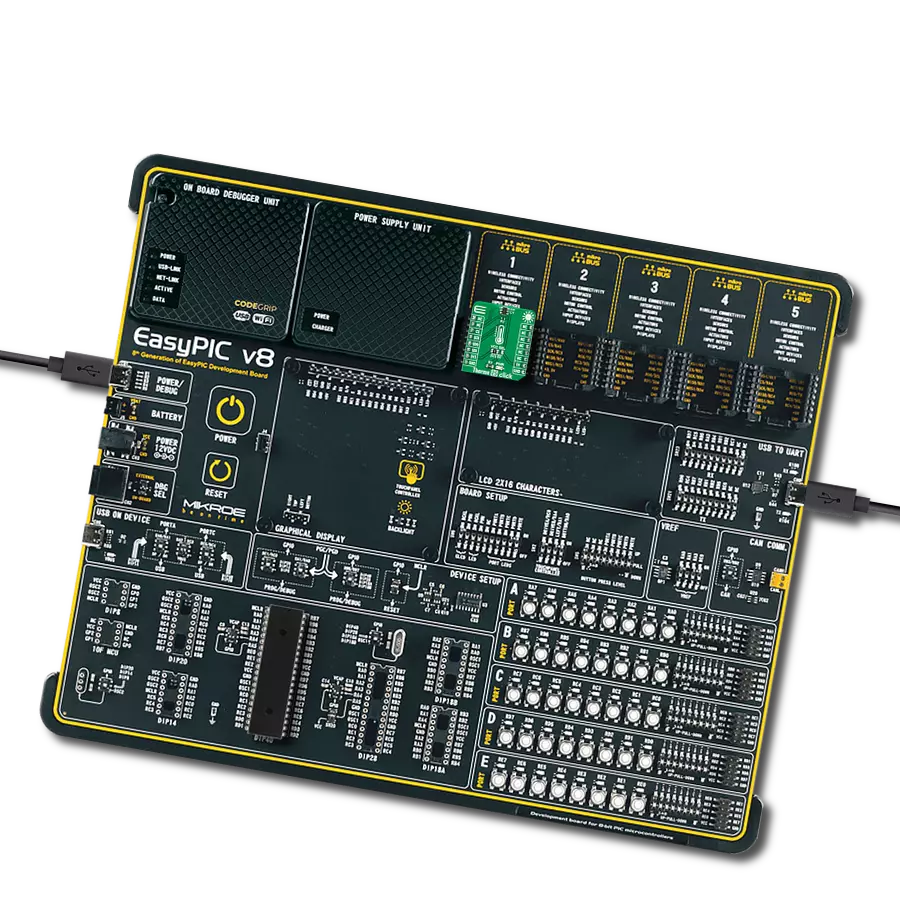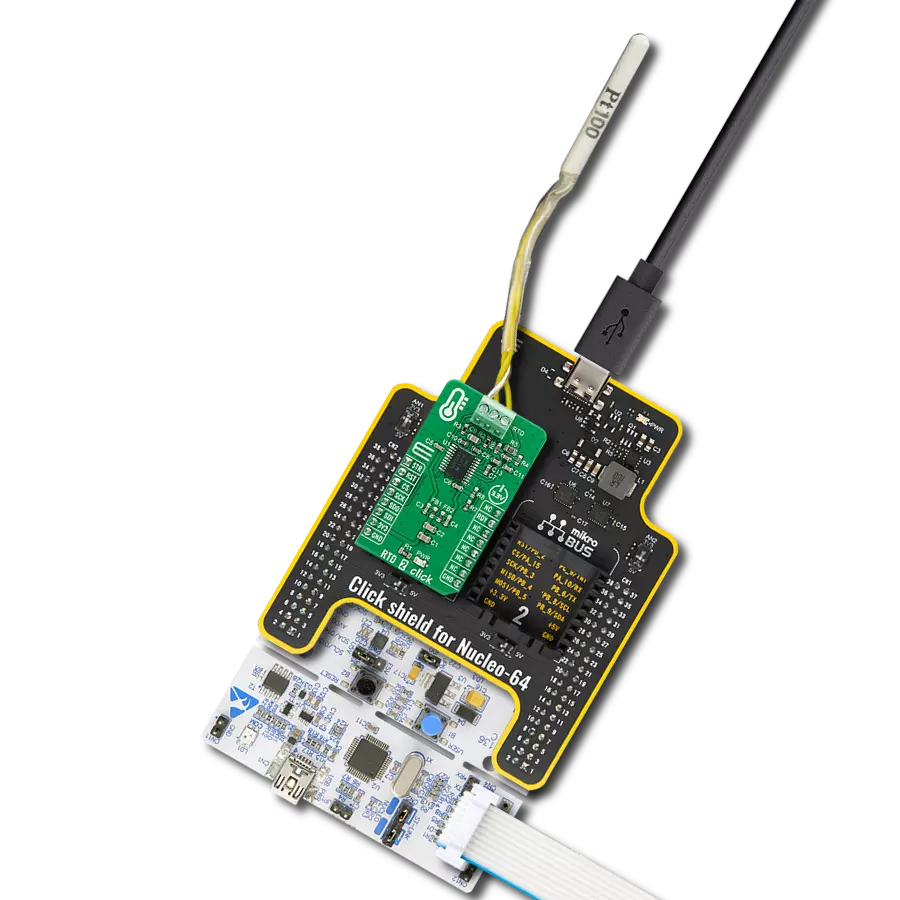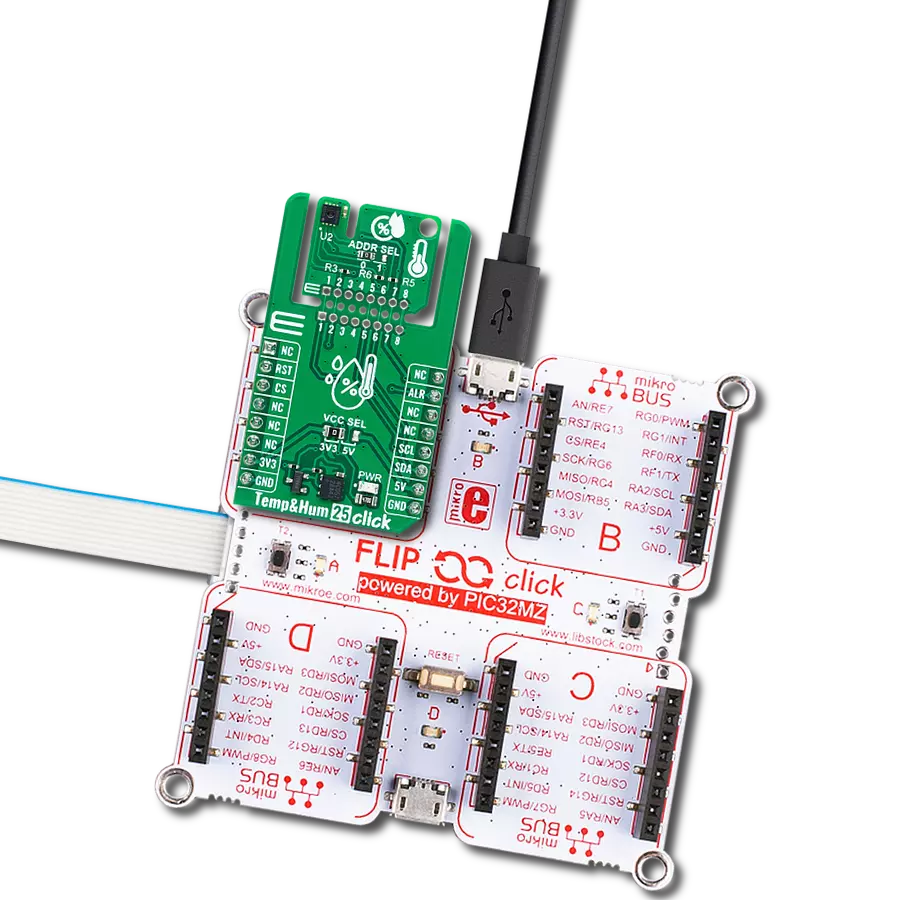When it comes to temperature measurement, details matter. Our thermocouple probe solution goes beyond standard measurements, offering a level of accuracy that brings clarity to your data, making every degree count.
A
A
Hardware Overview
How does it work?
Thermo K 3 Click is based on the MAX6675, a cold-junction-compensated K-thermocouple-to-digital converter from Analog Devices. It includes signal-conditioning hardware to convert the thermocouple signal into a voltage compatible with the input channels of the ADC. The thermocouple circuit consists of two ends of the thermocouple wires: the hot junction, which is the thermocouple probe itself (0°C - 102.75°C), and the cold junction, which is the ambient temperature, usually the board itself (-20°C - 85°C). The
MAX6675 senses the difference and corrects the changes between those ends by compensating for the cold junction. The MAX6675 measures the voltage from the thermocouple’s output and the sensing diode and passes it to the internal conversion function stored in the ADC. The Thermo K 3 Click uses a 3-Wire (read-only) SPI serial interface to communicate with the host MCU with clock frequency up to 4.3MHz. Besides the temperature, you can get the data of the open thermocouple detection. For this feature, the T- of
the PCC-SMP connector is grounded over the R6 0Ω resistor. You can desolder it if you do not need this feature or it does not suit your needs. This Click board™ can operate with either 3.3V or 5V logic voltage levels selected via the VCC SEL jumper. This way, both 3.3V and 5V capable MCUs can use the communication lines properly. Also, this Click board™ comes equipped with a library containing easy-to-use functions and an example code that can be used as a reference for further development.
Features overview
Development board
Fusion for TIVA v8 is a development board specially designed for the needs of rapid development of embedded applications. It supports a wide range of microcontrollers, such as different 32-bit ARM® Cortex®-M based MCUs from Texas Instruments, regardless of their number of pins, and a broad set of unique functions, such as the first-ever embedded debugger/programmer over a WiFi network. The development board is well organized and designed so that the end-user has all the necessary elements, such as switches, buttons, indicators, connectors, and others, in one place. Thanks to innovative manufacturing technology, Fusion for TIVA v8 provides a fluid and immersive working experience, allowing access
anywhere and under any circumstances at any time. Each part of the Fusion for TIVA v8 development board contains the components necessary for the most efficient operation of the same board. An advanced integrated CODEGRIP programmer/debugger module offers many valuable programming/debugging options, including support for JTAG, SWD, and SWO Trace (Single Wire Output)), and seamless integration with the Mikroe software environment. Besides, it also includes a clean and regulated power supply module for the development board. It can use a wide range of external power sources, including a battery, an external 12V power supply, and a power source via the USB Type-C (USB-C) connector.
Communication options such as USB-UART, USB HOST/DEVICE, CAN (on the MCU card, if supported), and Ethernet is also included. In addition, it also has the well-established mikroBUS™ standard, a standardized socket for the MCU card (SiBRAIN standard), and two display options for the TFT board line of products and character-based LCD. Fusion for TIVA v8 is an integral part of the Mikroe ecosystem for rapid development. Natively supported by Mikroe software tools, it covers many aspects of prototyping and development thanks to a considerable number of different Click boards™ (over a thousand boards), the number of which is growing every day.
Microcontroller Overview
MCU Card / MCU
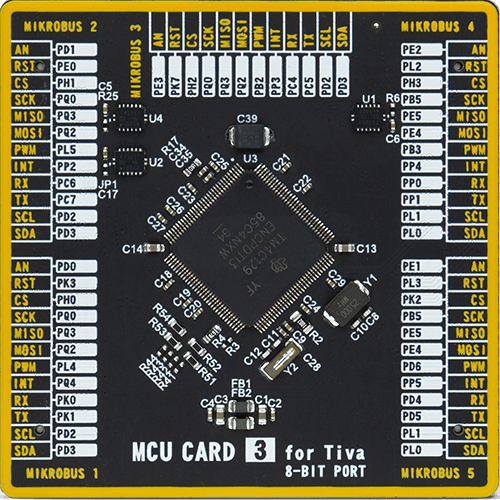
Type
8th Generation
Architecture
ARM Cortex-M4
MCU Memory (KB)
1024
Silicon Vendor
Texas Instruments
Pin count
128
RAM (Bytes)
262144
You complete me!
Accessories
The Type-K thermocouple, equipped with glass braid insulation, is a versatile tool designed for precision temperature measurements, particularly in high-temperature environments. With a calibrated Type-K configuration and a 24 AWG gage wire spanning 2 meters, this probe is engineered to provide reliable readings. Its operational temperature range extends to 480°C (900°F), making it suitable for demanding applications. The glass braid insulation ensures durability and stability during measurements, and the connector body can withstand temperatures up to 220°C (425°F). The Type-K thermocouple probe features a PCC-SMP connector at its end, which offers compatibility with THERMO Click and Thermo K Click boards. This connectivity makes it a valuable tool for various industrial and scientific settings, where precision and reliability in temperature monitoring are essential.
Used MCU Pins
mikroBUS™ mapper
Take a closer look
Click board™ Schematic
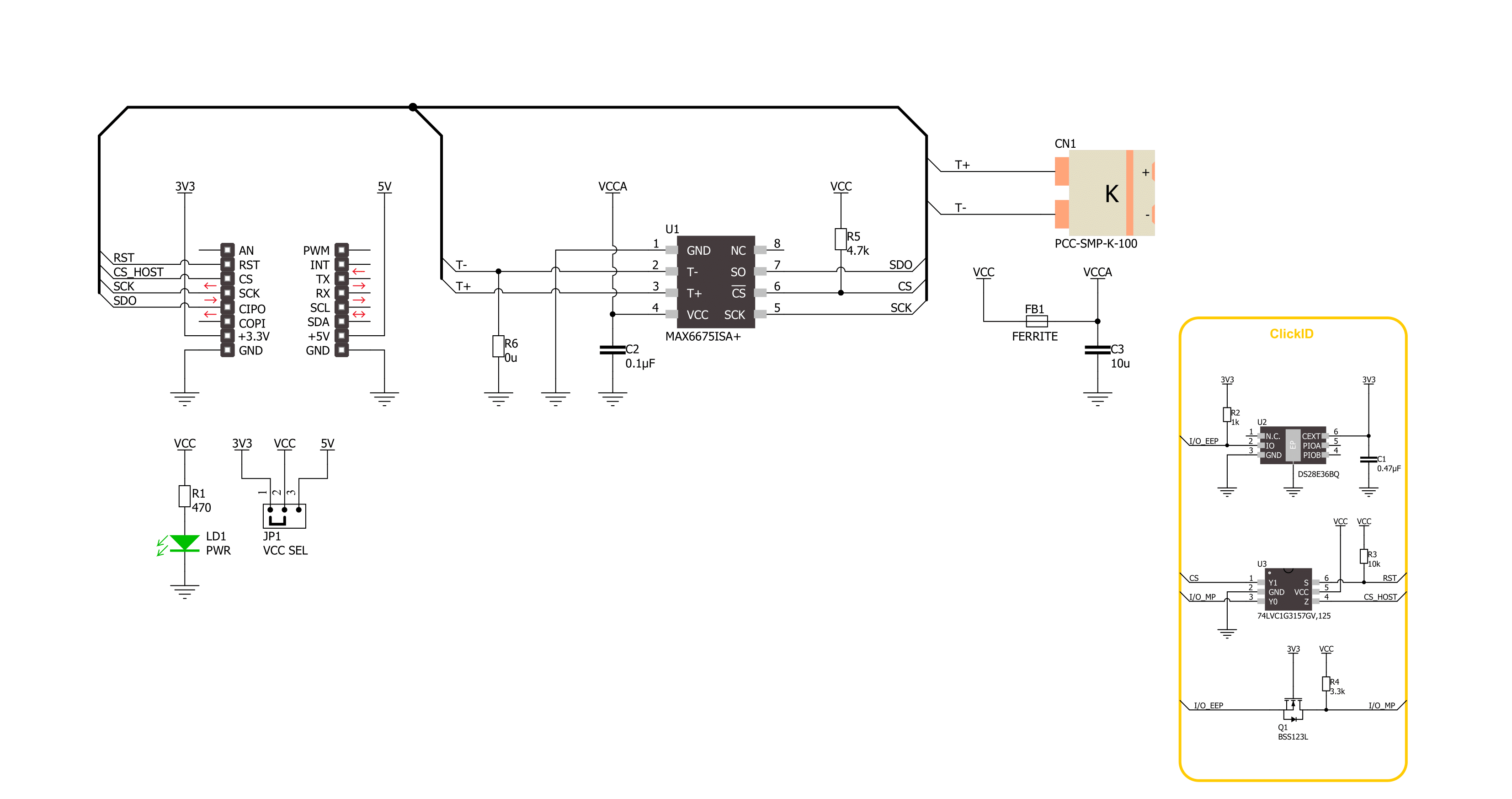
Step by step
Project assembly
Software Support
Library Description
This library contains API for Thermo K 3 Click driver.
Key functions:
thermok3_read_data- This function reads a raw data output by using the SPI serial interface.thermok3_read_data- This function reads a raw data output and converts it to temperature in Celsius.
Open Source
Code example
The complete application code and a ready-to-use project are available through the NECTO Studio Package Manager for direct installation in the NECTO Studio. The application code can also be found on the MIKROE GitHub account.
/*!
* @file main.c
* @brief Thermo K 3 Click example
*
* # Description
* This example demonstrates the use of Thermo K 3 Click board by reading and displaying
* the temperature measurements.
*
* The demo application is composed of two sections :
*
* ## Application Init
* Initializes the driver and logger.
*
* ## Application Task
* Reads the temperature measurement in Celsius and displays the results on the USB UART
* approximately once per second. If there's no thermocouple type-K probe inserted an
* appropriate message will be displayed instead.
*
* @author Stefan Filipovic
*
*/
#include "board.h"
#include "log.h"
#include "thermok3.h"
static thermok3_t thermok3;
static log_t logger;
void application_init ( void )
{
log_cfg_t log_cfg; /**< Logger config object. */
thermok3_cfg_t thermok3_cfg; /**< Click config object. */
/**
* Logger initialization.
* Default baud rate: 115200
* Default log level: LOG_LEVEL_DEBUG
* @note If USB_UART_RX and USB_UART_TX
* are defined as HAL_PIN_NC, you will
* need to define them manually for log to work.
* See @b LOG_MAP_USB_UART macro definition for detailed explanation.
*/
LOG_MAP_USB_UART( log_cfg );
log_init( &logger, &log_cfg );
log_info( &logger, " Application Init " );
// Click initialization.
thermok3_cfg_setup( &thermok3_cfg );
THERMOK3_MAP_MIKROBUS( thermok3_cfg, MIKROBUS_1 );
if ( SPI_MASTER_ERROR == thermok3_init( &thermok3, &thermok3_cfg ) )
{
log_error( &logger, " Communication init." );
for ( ; ; );
}
log_info( &logger, " Application Task " );
}
void application_task ( void )
{
float temperature = 0;
err_t error_flag = thermok3_read_temperature ( &thermok3, &temperature );
if ( THERMOK3_OK == error_flag )
{
log_printf( &logger, " Temperature: %.2f C\r\n\n", temperature );
}
else if ( THERMOK3_OPEN_THERMOCOUPLE == error_flag )
{
log_printf( &logger, " NO thermocouple input\r\n\n" );
}
Delay_ms ( 1000 );
}
int main ( void )
{
/* Do not remove this line or clock might not be set correctly. */
#ifdef PREINIT_SUPPORTED
preinit();
#endif
application_init( );
for ( ; ; )
{
application_task( );
}
return 0;
}
// ------------------------------------------------------------------------ END
